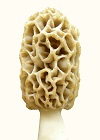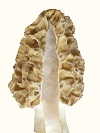 |
|
Research Photo Pages


|
Plant Phenotypes Having observed phenotypic variations in morel mushrooms, I see evidence of the same phenomenon in plants. The phenomenon involves individuals which are genetically the same producing variations in types as a method of coping with environmental variations. They do that by turning various genes on and off in a semistable manner. Here are two examples: There is a weed called Field Bindweed. It produces small bell shaped flowers. Some are white; some are partially purple; and some are in-between. The differences are in patches, and due to runners under the ground, a patch represents one plant. Those differences would have to be phenotypic, not genotypic, because gene exchange would homogenize the gene pool in a local area. Another example is the elm tree. It produces a soft seed which forms early in the spring. In fact, the seeds form before the leaves. The purpose is to get seeds into the ground and growing while there is plenty of spring moisture and cool temperatures, so the germinating seed does not dry out. Tree seeds usually fall on grass and do not get into the ground. They germinate on top of the ground and extend roots down into it. So they dry out before getting started, if conditions are not wet and cool. The problem for the elm is that freezing is highly variable in the spring. So there is a conflict between the need to get seeds formed early and the danger of them freezing after they form. What one observes is that each elm tree forms seeds at a different time—some early and some later. Those differences would have to be phenotypic, because gene exchange would homogenize the local gene pool. The usual assumption is that those differences are accidental and stem from variations in environmental conditions, which is the usual explanation for variations in morel mushrooms. But the differences are not accidental, because environments do not produce such variations. And the function which those variations serve is extremely important. The elm tree could not leave such an important matter to chance, nor could the morel. Photos: Phenotypes Explained
|
